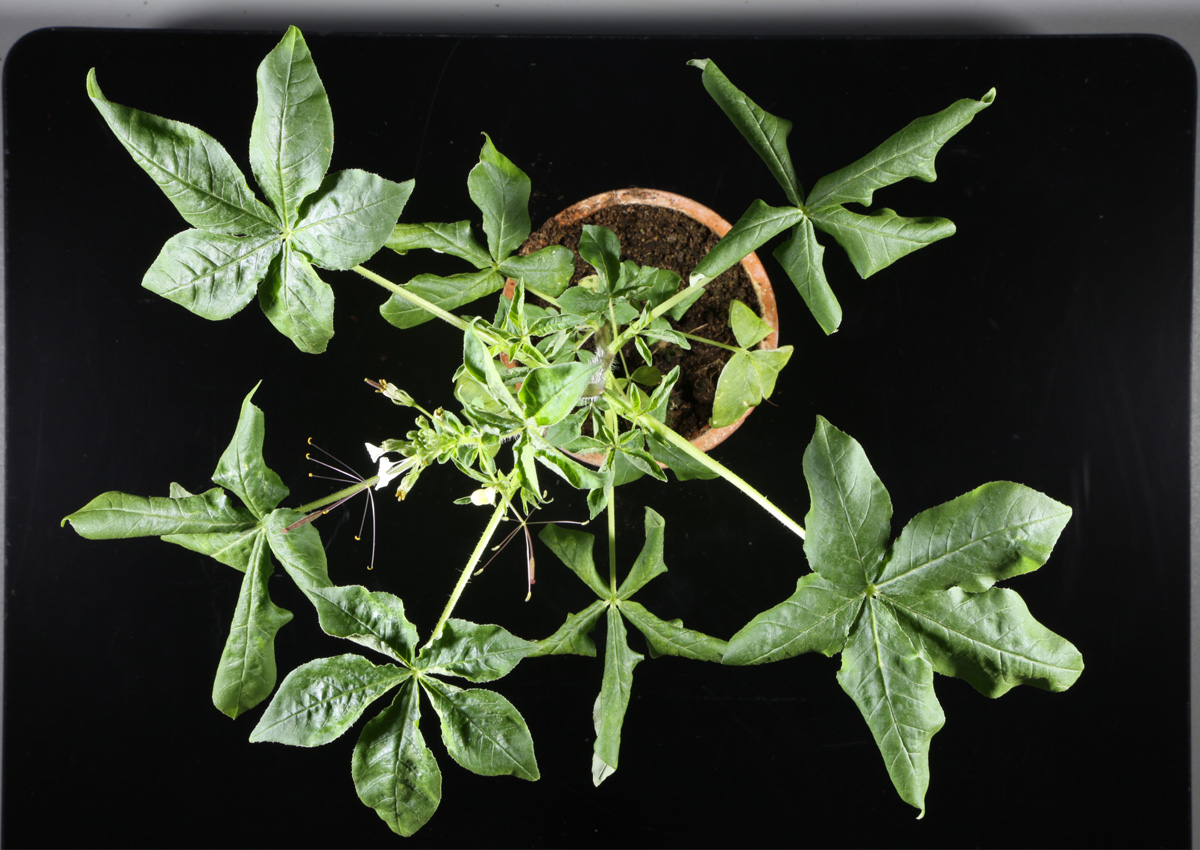
Key Mechanism of C4 Photosynthesis Now Explained
December 15, 2021| |
A research team led by the University of Bonn, and also involves researchers from Argentina, Canada and the University of Düsseldorf provides new insights into an enzyme that plays a key role in C4 photosynthesis.
Around three percent of all plants have developed a trick that enables them to use even the smallest amounts of CO2 in C4 photosynthesis. In this process, they first pre-fix CO2 by linking it to a transport molecule, producing an organic compound containing four carbons - hence the name C4 photosynthesis. This is transported into the bundle sheath cells, which are specially sealed. Here, the carbon dioxide is released again and is then available for further reactions of photosynthesis. This release step is catalyzed by the NAD-malate enzyme (C4-NAD-ME).
For a long time, it was unclear exactly how C4-NAD-ME functions. The research team investigated this using an ornamental plant of the genus Cleome. The team found that NAD-ME consists of two large building blocks, the alpha and the beta subunit. While the alpha unit is responsible for CO2 release, the beta subunit serves primarily to regulate the activity of the enzyme.
This regulation is extremely important because CO2 release takes place in the mitochondria, where important metabolic processes are constantly taking place. The beta subunit apparently prevents the two enzymes from getting in each other's way, regulating the reaction rate of C4-NAD-ME. To do this, it binds an intermediate product of the C4 photosynthesis cycle called aspartate. Aspartate ensures that the "photosynthetic variant" of NAD-ME becomes particularly active. The CO2 that is pre-fixed and intended for photosynthesis is thus mainly processed by the enzyme variant that "matches" it (and works much faster).
For more details, read the news article on the University of Bonn website.
| |
You might also like:
- Dynamic Model Measures Impact of Light Fluctuations on Photosynthesis
- Researchers Sequence Genomes of 600 Green Millet Plants, Find Gene for Dispersal
- Scientists Sequence Genome of Broomcorn Millet
Biotech Updates is a weekly newsletter of ISAAA, a not-for-profit organization. It is distributed for free to over 22,000 subscribers worldwide to inform them about the key developments in biosciences, especially in biotechnology. Your support will help us in our mission to feed the world with knowledge. You can help by donating as little as $10.
-
See more articles:
-
News from Around the World
- Researchers Find High Yields with Small Environmental Impact Possible for Rice
- ISAAA Launches Brief 56 - Breaking Barriers with Breeding: A Primer on New Breeding Innovations for Food Security
- Report Presents Africa's Growing Hunger Crisis
- Nigeria and Partners Launch Bt Cowpea Nutrition Outreach
- Report Highlights Biotech Updates and New Technologies in Brazil
- EFSA Releases Scientific Opinion on Three-Event Stack GM Maize NK603 × T25 × DAS-40278-9
-
Research Highlights
- Rice Gene OsNAC5 Contributes to Drought Tolerance Through Lignin Buildup in Roots
- Key Mechanism of C4 Photosynthesis Now Explained
-
Plant
- CRISPR Glows Up With Biosensor Detectors
- US University Sends Cotton to Space to Explore Potentials of Somatic Embryogenesis in Genome Editing
- CRISPR Experts Introduce Twin Prime Editing
-
Health
- Researchers in Japan Invent Mask that Glows When Exposed to Coronavirus
-
Read the latest: - Biotech Updates (April 17, 2024)
- Gene Editing Supplement (April 10, 2024)
- Gene Drive Supplement (February 22, 2023)
-
Subscribe to BU: - Share
- Tweet

